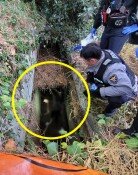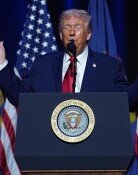Did North Spend Aid on Missile Test?
Did North Spend Aid on Missile Test?
Posted July. 11, 2006 03:25,
South Koreas military authorities estimate that North Korea spent about 60 billion won for the production and launch of seven missiles it fired on July 5, including the Taepodong-2 missile. Some point out that North Korea, which had been known to be unsustainable without overseas assistance, could spend such a great sum of money on missiles because South Korea had been giving it unconditional aid for six years since the inter-Korean summit meeting in 2000.
North Koreas budget for 2005, released at the third session of the 11th Supreme Peoples Assembly in October 2004, was 388.5 billion won in the North Korean currency. If converted to the dollar, not using the North Koreas official exchange rate of 150 won for a dollar but the actual market exchange rate of 3,000 won per dollar, that figure amounts to $129.5 million. Thus, the 60 billion won or $63.69 million used on the missile test is equivalent to almost half of the countrys annual budget.
It is three times the $24 million frozen in Macaus Banco Delta Asia, which North Korea demands to be freed, boycotting the six-party nuclear talks for eight months now.
For six years after the 2000 inter-Korean summit meeting, a total of 3.233379 trillion won has been sent as aid to the North from the Inter-Korean Cooperation Fund. If we convert that sum using the market exchange rate, it exceeds the countrys budget for 26 years.
Since South Korean governments assistance to North Korea from the fund has been given in the form of humanitarian aid or infrastructure construction including the Gaesong Industrial Complex and cross-border railroads, the Souths aid to the North cannot be directly linked to the Norths armament.
Nevertheless, the cost of building Gaesong Industrial Complex and roads, not to mention the fertilizer and food aided by South Korea, should have been covered by North Koreas budget. In this regard, experts say that the massive assistance from the South ended up allowing the North an extra budget to use on missile and nuclear developments.
Although I am aware that our people are not being fed and living well like others, I endorsed spending $200-300 million on satellites, said North Korean leader Kim Jong Il to his party and government officials in January 1999.
Some even argue that North Korea conducted missile tests to increase its missile exports, from which the country makes about $900 million annually, while South Korea helped with its bread and butter issue.
Moreover, some claim that the foreign currency North Korea earns from the Gaesong Industrial Complex and Mt. Geumgang tour is being used for increasing armaments, although that cannot be counted as a direct assistance from the South.
South Koreas Vice Minister of Finance and Economy Park Byung-won, who also heads Inter-Korean Economic Cooperation Promotion Committee, said in a lecture given on June 28 that the hard currency North Korea earns from the Mt. Geumgang tour and Gaesong Industrial Complex amounts to $20 million or about 60 billion won annually.
At a time when there is a real concern over North Koreas using South Koreas aid for military purposes, South Korea would be wrong to continue supporting the North through the Mt. Geumgang tour and Gaesong Industrial Complex without thorough monitoring of the fund use, pointed out Lee Dae-woo, a researcher at Sejong Institute.
In addition, a number of experts say that South Korea provided the groundwork for North Koreas missile and nuclear development with its assistance, including the $500 million that former President Kim Dae-jung paid to the North in cash as a price for the inter-Korean summit meeting.
taewon_ha@donga.com weappon@donga.com







